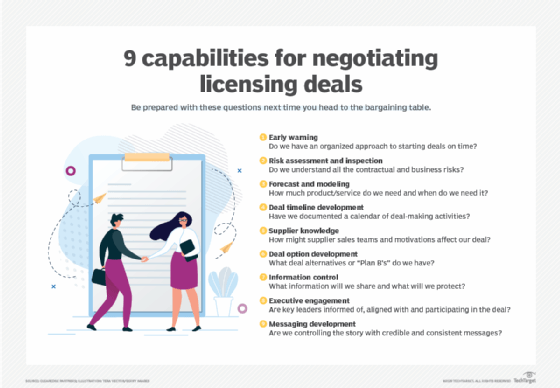Is third-party threat a viable server maintenance contract tactic?
When negotiating server hardware and maintenance agreements with vendors, server customers can threaten to go elsewhere. But how effective is that tactic?
Name-brand server hardware vendors have lost considerable market share to white box suppliers over the last several years. As a result, they employ a transactional game using ingrained sales tactics during server hardware deals and server maintenance contract negotiations throughout the sever lifecycle. One strategy organizations use to counter these often-aggressive sales strategies is to threaten to go with a third party during negotiations with their supplier.
But how effective is exploring alternatives to your vendor during server hardware and maintenance contract negotiations? Do enterprises tend to follow through with the threat or are they -- more often than not -- simply using it as an exercise to determine a baseline and get a better deal with their current supplier?
If you asked analyst Danilo Milevsky, of IT consultant firm ClearEdge Partners, a few years ago, he would have said most of his clients don't follow through. But things have changed, he said in answer to a question about the subject during the webinar Moments of Truth in the Server Lifecycle, which Milevsky presented with fellow ClearEdge analyst Atish Patel.
"In the past two, three years, we've really seen most of our clients follow through," he said. "It used to just be a tactical play and kind of a threat and an exercise; whereas, now, I'd say probably 30% to 50% of our clients do go to a third party and follow through."
They don't always follow through for their whole IT environment, however. Sometimes, they end up going with the alternative for just a piece of it, Milevsky added.
"Because even if you're able to peel off 25% or 50% of your environment, that's 50% of your spend that IBM is not getting or that [Hewlett Packard Enterprise] is not getting," he said. "So, they're going to be worried about that, and they're going to feel the threat, and they're going to come back with a competitive offer."

So, in short, the answer is yes. The threat of going with a third party, rather than your current provider during server maintenance and hardware refresh and renewal negotiations, works. Furthermore, many organizations actually follow through with the threat by changing suppliers -- at least, for part of their overall contract with their server vendor.
They are also using the threat tactic also as an exercise -- sometimes, simultaneously -- Milevsky noted. It depends on the preferences of the business.
I wonder what other maintenance providers would offer?
During the webinar, Milevsky mentioned a client who successfully used the threat of going elsewhere as part of a strategy to get a better deal from its server supplier. It involved a $2.4 million server maintenance contract renewal, where IBM offered a 13% discount as part of larger deal.
ClearEdge analysts determined the 13% maintenance discount lacking, with 20% to 30% off sounding more appropriate and competitive. They suggested the client go out and see what kind of deal a third-party maintenance provider would offer on the same $2.4 million bill of materials.
So, the client then went to two alternative providers -- Park Place Technologies and Curvature -- to obtain alternative cost quotes for outsourcing maintenance.
Before either bid returned for the contract, IBM went ahead and reduced maintenance to $1.2 million -- 55% off the original bill of materials, Milevsky said.
"So, just because of the threat of going to a third party and IBM losing the business, [IBM] immediately came back and dropped the price because they knew they needed to compete at a better price in order to keep the business," he explained. "So, [the client] didn't even end up going with a third party because IBM cut the price immediately."
"There's definitely a value of keeping your OEM maintenance versus a third party," he concluded. "You might have those needs, you might need the firmware and software upgrades, you might not. So, it really comes down to evaluating what your business needs are -- and what the monetary value is and your monetary needs are -- to counterpose those two things."
About ClearEdge Partners
Founded by senior sales executives from large IT suppliers and informed by current market analytics, ClearEdge enables CIOs and their teams to make more competitive IT investments. By combining rigorous inspection and IT financial expertise, they identify risk and opportunity, align internal teams, and maintain leverage throughout the lifecycle of supplier relationships. As a result, their clients maximize the value of their investments by unlocking millions of dollars from legacy spending and redirecting funds toward IT modernization, digital and cloud transformation with confidence and speed.






